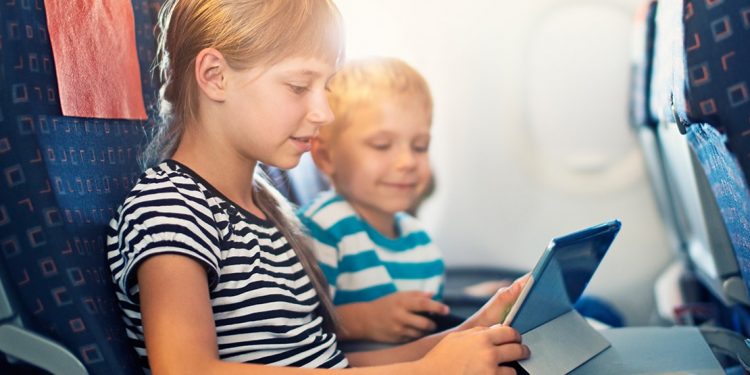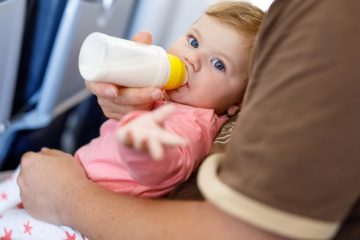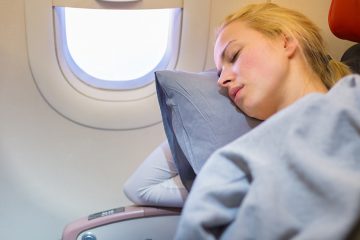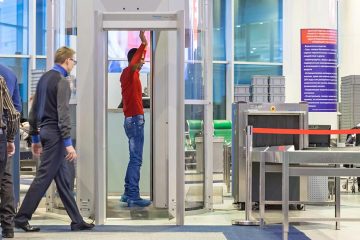Your Essential Guide to Flying with Kids
Preparing to Fly With Kids
Flying is undoubtedly one of the most stressful aspects of traveling. With all the changes in airport security, getting through security is now intimidating and confusing. The crowds and maze of hallways certainly don’t help either. Even if you think you’ve mastered airports for yourself, kids bring a whole new set of questions into the mix.
In fact, going on an international family vacation brings a whole host of challenges and extra things to worry about. But getting there is where it all begins — thankfully, we have the answers to the most commonly asked questions about flying with kids. Plus some tips to help make the experience go smoothly, even if it’s their first time!
Do Children Need ID to Fly?
When you are flying with kids, identification is something to keep in mind. While the Transportation Security Administration doesn’t require children under the age of 18 to travel with a photo ID on a domestic flight, your airline might require proof of age when your child checks in.
Also, you might need evidence of the relationship between child and parent.
Of course, the airline’s policies can vary a lot so it is a good idea to check when you are booking your flight. Simply call the airline’s customer service line and inquire about the rules.
No matter what the age, if you are flying internationally your child will need a passport. If your child doesn’t currently have a passport, make sure you give yourself plenty of time to get one before you embark on your trip.
If you are traveling with your child as the only parent on the trip, it is also a good idea to have some documentation from the other parent that you have permission to travel with the child. Divorced parents might need to show a copy of their custody agreement.
How to Keep Your Kids Busy on a Plane
How do you avoid restless, bored children? Here are a few ideas for keeping them happy and entertained:
- Play a game such as 20 Questions or I Spy to keep them guessing and engaged.
- Buy them a new novel or comic book featuring a character you know they will love and surprise them with it on the plane.
- Bring along some small finger puppets so you can act out stories.
- Small children are engaged by lift the flap books with features they can interact with.
- Bring along a tablet and pre-load it with a bunch of shows your child loves. Make sure you bring headphones, so you don’t annoy fellow passengers with those catchy kids show songs.
- Small handheld puzzles are perfect for giving your child something to do on the plane.
- A coloring book with a few crayons is also a good idea. Look for triangular shaped crayons that won’t roll off the seat back table.
- Download an audiobook version of your child’s favorite stories and listen to it on your phone or tablet.
How to Help Your Child with Motion Sickness
Turbulence and take-off can sometimes leave children feeling a little bit queasy. Bring along a few sick bags of your own just in case you need more than what is in the seat back in front of you.
If your child is prone to motion sickness, you can request a window seat near the wing or near the front, as these spots feel more stable. Make sure your child doesn’t eat anything too heavy or greasy before the flight.
Approximately 30 minutes to one hour before the flight, give your child a motion sickness tablet such as Dramamine for Kids.
Open the air vents above their seat to give them fresh air. You might even want to try a drop or two of peppermint essential oil on your child’s shirt near their collar, as the smell helps reduce nausea.
Ginger is also a natural remedy for nausea, as it slows down the movement of the walls of the stomach. Encourage your child to focus on something far in the distance, rather than looking at a tablet or a book.
How to Help Your Child with Ear Pressure
The change in pressure when taking off and landing can cause serious discomfort for your little one. Babies should be given a bottle or breastfed at this time, as it encourages them to suck and swallow to help their ears pop.
Older kids can be given a sugar-free lollipop that will serve the same purpose.
Whether your ideal vacation is lounging in the sun or adventuring in new locales, these best cruise lines have high quality holidays waiting for you.
What About Turbulence?
Young children can be frightened of turbulence, as they think it means the plane is in danger. Make sure you reassure them that turbulence is normal and nothing to worry about.
Explain that turbulence in a plane is just like a car going over a few bumps in the road; it will be over soon and it doesn’t mean anything is wrong. If your child is still nervous, you can do another activity with them to distract them or hold their hand to help them calm down.
More Tips for Flying with Kids
Here are a few more things to remember to help that flight go more smoothly:
- If you can, choose flights during the normal time when your children would be asleep anyway. You’ll find they will be more likely to sleep during the flight.
- Bring along a few healthy snacks to keep kids from getting grumpy and hungry. Dried fruit, nuts, crackers, trail mix and granola bars are a great idea.
- You’ll also want to pack a change of clothes for your child, just in case of an unexpected illness or if they spill food on themselves.
- Use a backpack for your hand luggage. It means you will have both hands free so you can carry your child or hold their hand while also showing your passports with the other hand.
- It is a good idea to bring a pillow on board. Small children can sit on one so they have a better view out the window and then they can use it for sleeping.
- Remember the magic of flying! Taking a plane is actually quite an exciting experience and flying with your little ones can help you recapture the awe of soaring through the sky.








